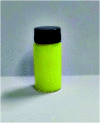A novel quercetin/β-cyclodextrin transdermal gel, combined or not with therapeutic ultrasound, reduces oxidative stress after skeletal muscle injury
- PMID: 35480723
- PMCID: PMC9037813
- DOI: 10.1039/d1ra04708f
A novel quercetin/β-cyclodextrin transdermal gel, combined or not with therapeutic ultrasound, reduces oxidative stress after skeletal muscle injury
Abstract
A gel containing the inclusion complex of quercetin and β-cyclodextrin was developed in order to verify its effects, isolated or using phonophoresis, on oxidative biomarkers after skeletal muscle injury. 30 male rats were divided into one of five groups: Control (CTRL), Muscle Injury (MI), Therapeutic Pulsed Ultrasound (TPU), Therapeutic Pulsed Ultrasound plus Quercetin (TPU plus gel-QUE) or Quercetin gel (QUE). Quercetin gel was complexed with β-Cyclodextrin (β-CD) using chromatography (HPLC). TPU and quercetin application occurred with 2, 12, 24, 48, 72, 96 hours intervals after injury. Gastrocnemius muscle was injured by mechanical trauma. Lipid peroxidation, superoxide dismutase activity, and catalase activity were assessed. The inclusion complex exhibited adequate entrapment efficiency, relative density and pH. The viscosity of the complex showed a non-Newtonian pseudoplastic behavior. Quercetin/β-cyclodextrin gel reduced lipid peroxidation, superoxide dismutase activity and catalase activity compared to muscle injury group. Similarly, phonophoresis and TPU also reduced the levels of these oxidative biomarkers. In conclusion, quercetin/β-cyclodextrin transdermal gel reduces oxidative stress biomarkers after skeletal muscle injury irrespective of using phonophoresis.
This journal is © The Royal Society of Chemistry.
Conflict of interest statement
There are no conflicts to declare.
Figures









Similar articles
-
Effect of Phonophoresis and Copaiba Oil on Oxidative Stress Biomarkers after Skeletal Muscle Injury in Rats.Ultrasound Med Biol. 2021 Sep;47(9):2657-2663. doi: 10.1016/j.ultrasmedbio.2021.04.007. Epub 2021 Jul 6. Ultrasound Med Biol. 2021. PMID: 34243989
-
Topical application of (S)-(-)-limonene is as effective as phonophoresis for improving oxidative parameters of injured skeletal muscle in rats.Naunyn Schmiedebergs Arch Pharmacol. 2020 Dec;393(12):2293-2300. doi: 10.1007/s00210-020-01941-y. Epub 2020 Jul 11. Naunyn Schmiedebergs Arch Pharmacol. 2020. PMID: 32653977
-
Effects of therapeutic pulsed ultrasound and dimethylsulfoxide (DMSO) phonophoresis on parameters of oxidative stress in traumatized muscle.Ultrasound Med Biol. 2010 Jan;36(1):44-50. doi: 10.1016/j.ultrasmedbio.2009.09.001. Ultrasound Med Biol. 2010. PMID: 19900747 Clinical Trial.
-
Effects of phonophoresis with diclofenac linked gold nanoparticles in model of traumatic muscle injury.Mater Sci Eng C Mater Biol Appl. 2020 May;110:110681. doi: 10.1016/j.msec.2020.110681. Epub 2020 Jan 20. Mater Sci Eng C Mater Biol Appl. 2020. PMID: 32204109
-
Effect of Pulsed Therapeutic Ultrasound and Diosmin on Skeletal Muscle Oxidative Parameters.Ultrasound Med Biol. 2018 Feb;44(2):359-367. doi: 10.1016/j.ultrasmedbio.2017.09.009. Epub 2017 Nov 7. Ultrasound Med Biol. 2018. PMID: 29126754
Cited by
-
Preparation and Characterization of a Nano-Inclusion Complex of Quercetin with β-Cyclodextrin and Its Potential Activity on Cancer Cells.Micromachines (Basel). 2023 Jun 30;14(7):1352. doi: 10.3390/mi14071352. Micromachines (Basel). 2023. PMID: 37512663 Free PMC article.
-
Cyclodextrin-Based Delivery Systems for Flavonoids: Mechanisms, Advances, Formulation, and Application Opportunities.Antioxidants (Basel). 2025 Aug 14;14(8):998. doi: 10.3390/antiox14080998. Antioxidants (Basel). 2025. PMID: 40867894 Free PMC article. Review.
-
Exploring the Potential Role of Quercetin Dihydrate Against Carbon Tetrachloride Induced Oxidative Stress in Mice: A Randomized Control Trial.Food Sci Nutr. 2025 Aug 21;13(8):e70793. doi: 10.1002/fsn3.70793. eCollection 2025 Aug. Food Sci Nutr. 2025. PMID: 40852160 Free PMC article.
-
Investigation of the biochemical and histopathological effects of vitamin C, selenium, and therapeutic ultrasound on muscle damage in rats.Naunyn Schmiedebergs Arch Pharmacol. 2023 Dec;396(12):3581-3593. doi: 10.1007/s00210-023-02547-w. Epub 2023 Jun 1. Naunyn Schmiedebergs Arch Pharmacol. 2023. PMID: 37261476
-
Quercetin and Nano-Derivatives: Potential and Challenges in Cancer Therapy.Int J Nanomedicine. 2025 May 24;20:6701-6720. doi: 10.2147/IJN.S509877. eCollection 2025. Int J Nanomedicine. 2025. PMID: 40444010 Free PMC article. Review.
References
LinkOut - more resources
Full Text Sources

